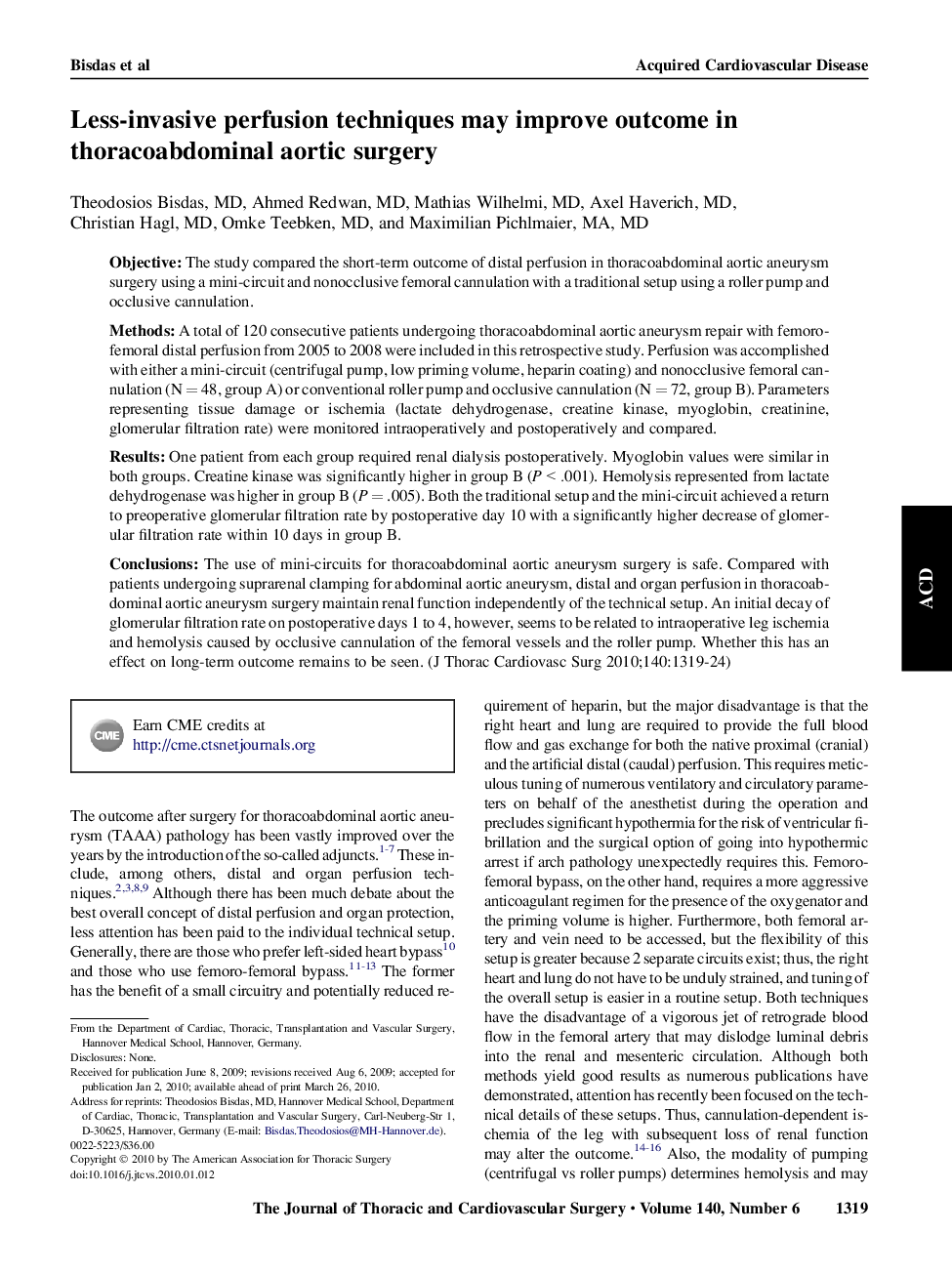| کد مقاله | کد نشریه | سال انتشار | مقاله انگلیسی | نسخه تمام متن |
|---|---|---|---|---|
| 2983028 | 1578654 | 2010 | 6 صفحه PDF | دانلود رایگان |

ObjectiveThe study compared the short-term outcome of distal perfusion in thoracoabdominal aortic aneurysm surgery using a mini-circuit and nonocclusive femoral cannulation with a traditional setup using a roller pump and occlusive cannulation.MethodsA total of 120 consecutive patients undergoing thoracoabdominal aortic aneurysm repair with femoro-femoral distal perfusion from 2005 to 2008 were included in this retrospective study. Perfusion was accomplished with either a mini-circuit (centrifugal pump, low priming volume, heparin coating) and nonocclusive femoral cannulation (N = 48, group A) or conventional roller pump and occlusive cannulation (N = 72, group B). Parameters representing tissue damage or ischemia (lactate dehydrogenase, creatine kinase, myoglobin, creatinine, glomerular filtration rate) were monitored intraoperatively and postoperatively and compared.ResultsOne patient from each group required renal dialysis postoperatively. Myoglobin values were similar in both groups. Creatine kinase was significantly higher in group B (P < .001). Hemolysis represented from lactate dehydrogenase was higher in group B (P = .005). Both the traditional setup and the mini-circuit achieved a return to preoperative glomerular filtration rate by postoperative day 10 with a significantly higher decrease of glomerular filtration rate within 10 days in group B.ConclusionsThe use of mini-circuits for thoracoabdominal aortic aneurysm surgery is safe. Compared with patients undergoing suprarenal clamping for abdominal aortic aneurysm, distal and organ perfusion in thoracoabdominal aortic aneurysm surgery maintain renal function independently of the technical setup. An initial decay of glomerular filtration rate on postoperative days 1 to 4, however, seems to be related to intraoperative leg ischemia and hemolysis caused by occlusive cannulation of the femoral vessels and the roller pump. Whether this has an effect on long-term outcome remains to be seen.
Journal: The Journal of Thoracic and Cardiovascular Surgery - Volume 140, Issue 6, December 2010, Pages 1319–1324